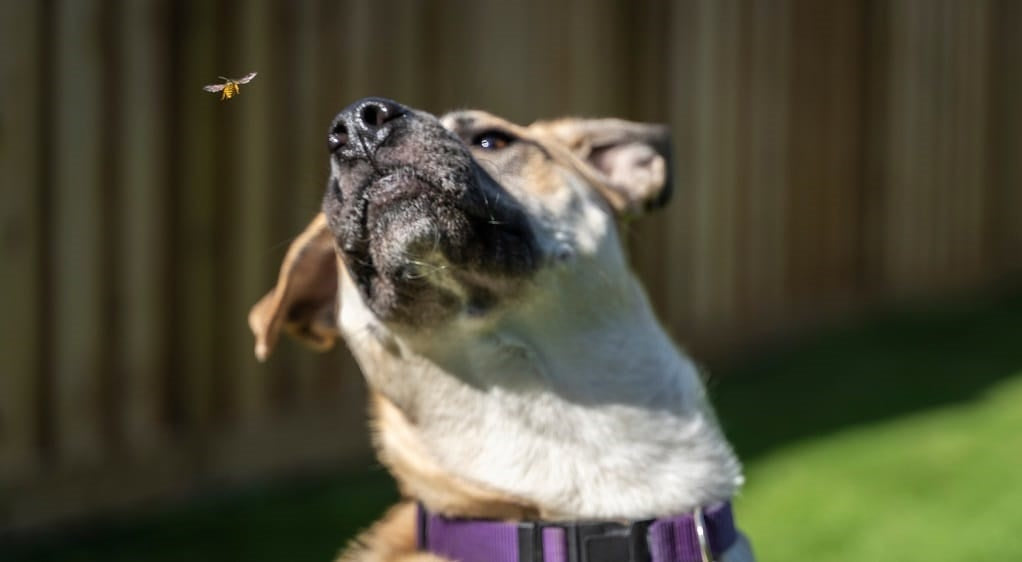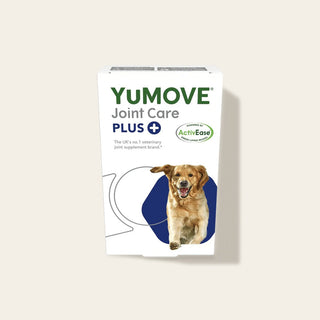

What to do when your dog gets stung by a bee
It’s easy to panic at the idea of your dog getting stung by a bee. How serious is it? Could your dog be allergic? And is there anything you can do to help your dog straight away?
Here we look into the business of bee stings and share a few insights so you and your pooch can relax and enjoy your summer walks in peace.
Let’s hear it for the bees
Bees are amazing creatures. These busy little insects are some of our planet’s most important pollinators – both for flowers and for the food we eat. They help preserve our environment and promote biodiversity. They are miniature ecological heroes.
Quite simply, our life wouldn’t be the same without these buzzy little pollinators.
Summer is high season for bees
Having stayed in the hive over the winter, most honey bees first venture out to forage when flowers start to bloom in April. By June, bees are foraging from dawn to dusk.
Bees follow the sun, and are highly influenced by the amount of sunlight every day. Interestingly, the summer solstice – the day with the most light - triggers a change in behaviour. At this point, the queen bee starts laying fewer eggs and more worker bees buzz about making the most of the plentiful nectar in summer flowers during late July and early August.
This means that you’re highly likely to come across bees on your daily dog walk at this time of year.
Is that a tiny playmate?

Dogs are inquisitive animals and they’re attracted by the buzzing and movement of these tiny creatures. They may think that a bee looks like a tiny playmate who’s up for a game of chase.
Unfortunately, though, dogs do occasionally get stung by bees – most often on the nose or face when they’ve looked too closely at a flower that’s already occupied by a bee. They can also get stung on the paw or body if they walk or roll on the grass without realising that a bee is hiding in that patch. And, of course, if your dog snaps at a bee, it might be stung in the mouth. Which is the opposite of fun.
How do you know?
How can you tell if your dog’s been stung? A sharp yelp is the most likely sign, followed by biting, licking or pawing at the afflicted area. The skin may be a little raised or red.
Don’t panic
First of all, don’t panic. A bee sting is rarely dangerous. As with humans, it’s usually just annoying and painful for your pet, rather than life-threatening.
But watch out for an allergic reaction
However, like us, some dogs do have allergic reactions, so that’s something to be aware of. Anaphylactic shock is very serious and can be fatal.
The signs that your dog is having an allergic reaction to a bee sting include:
- Difficulty breathing
- Severe swelling around the head or neck
- Vomiting
- Weakness or collapse
- Diarrhoea
If you spot any of these signs, take your dog to the vet immediately.
The chemistry behind the sting
Bees are unusual because they leave their stinger in their victim. The stinger is attached to a venom sac which contains a cocktail consisting of: an allergen called mellitin, proteins that cause pain and inflammation, and histamine that contributes to the pain.
Honey bees only sting when they feel in danger and, once they’ve stung you or your dog, they die. However, the stinger can keep on pumping its venom even when the bee is flapping its wings up to insect heaven. That’s why it’s important to remove the stinger as soon as possible.
How to remove the stinger
To do this, you’ll need either a credit card or a small piece of cardboard. Scrape the skin from underneath the venom sac to squeeze out the sting. Don’t use tweezers or you risk bursting the venom sac and doing more harm than good.
Minimise any swelling
Apply a cold compress to the area where your dog was stung, using a towel that you’ve run under the cold tap. Cool or cold water is better than ice cubes, because you don’t want to shock your dog.
A little later, you could apply some vet-approved antibacterial cream to the irritated area.
Keep an eye on your dog
Most often, if it’s going to happen at all, an allergic reaction will develop within 20 minutes of your dog being stung. But it can come on several hours later. If your dog’s been stung, keep a close eye on them to monitor their behaviour and make sure that they’re not showing any of the signs of distress mentioned above.
Enjoy the summer!

Most importantly, enjoy this glorious summer weather with your dog and don’t worry too much about bee stings. Although you might want to avoid letting your dog walk too close to the remains of other people’s picnics.



